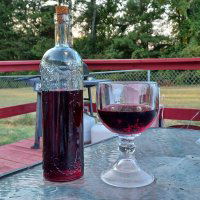A little frustrated b/c I again have a fruit wine that won’t clear… this time a rhubarb-wine. Been in secondary for about 2 months now.
I added pectinase during primary.
My frustration is - that I never know what causes the cloudiness… so I don’t know what to do about it.!?
Last time I had the issue I tried bentonite. Made no difference at all. Then I tried gelatine. Same result. Then kieselsol - also no effect.
What clearing-fining-strategies do you guys use? Do you know when to use which fining agent? And how do you know??
Any help appreciated! Just trying to get a better understanding of the clarification process …
I added pectinase during primary.
My frustration is - that I never know what causes the cloudiness… so I don’t know what to do about it.!?
Last time I had the issue I tried bentonite. Made no difference at all. Then I tried gelatine. Same result. Then kieselsol - also no effect.
What clearing-fining-strategies do you guys use? Do you know when to use which fining agent? And how do you know??
Any help appreciated! Just trying to get a better understanding of the clarification process …



